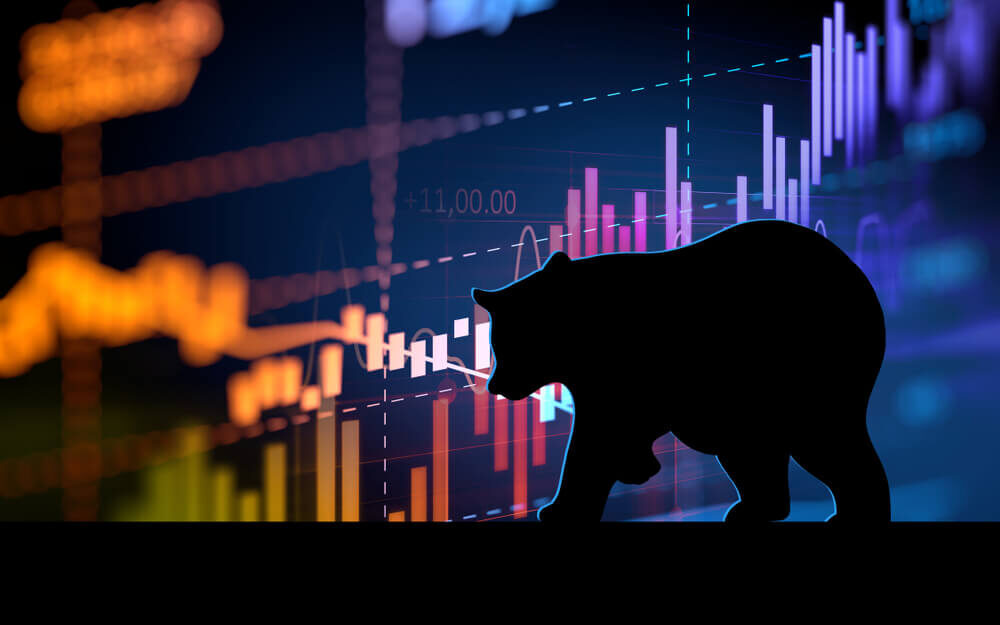POITOU, FRANCE — Stocks rose 311 points on the Dow on Tuesday. This is typical bear market action; sell-offs are followed by about a 50% bounce.
If it really is a bear market, the buyers will regret it. They will turn out to be the “dumb money” that stays too late at the party and pays too much for the stocks on offer.
Heading for the Exits
Meanwhile, Bezos is selling.
Beyond Meat’s CEO, Ethan Brown, is selling.
Buffett ain’t buying. His company, Berkshire Hathaway, is holding a record amount of cash — $122 billion — because Buffett can’t find companies he wants to buy at reasonable prices.
And Barron’s reports that “at the end of the first quarter, a coalition of 750 members of a group called TIGER 21, with a combined fortune of $75 billion, had more cash than at any time since 2013.”
TIGER 21 Chairman Michael Sonnenfeldt says stocks are already “priced to perfection.”
Adds Nomura strategist Masanari Takada:
“At this point, we think it would be a mistake to dismiss the possibility of a Lehman-like shock as a mere tail risk.”
Nomura bases its outlook on a study showing hedge funds heading for the exits.
The smart money leaves the party when it can still pass a breathalyzer test.
And here, we offer a new way to look at all the zany events of the last 19 years — the dot-com crash … the mortgage bubble … fake interest rates, quantitative easing (QE), zero interest-rate policy (ZIRP) … and all the rest.
We look at what is really going on — in real money terms — putting the headline claptrap to the side.
Lehman Moment
The dumbest money we ever saw was back in the late 1990s, when it was buying the dot-coms at outrageous prices. The Nasdaq doubled in a single year — 1999 — as companies with no profits and barely any sales rose to be worth billions.
But Mr. Market doesn’t suffer fools gladly. He toys with them. He tantalizes them with dreams of avarice beyond their wildest imaginations. He lures them to turn up the music, open another bottle of booze and make bigger fools of themselves.
And then, when he is ready, he calls the cops.
Stocks began an epic slide in January 2000 after the Dow-to-Gold ratio reached an all-time high of 40.
Gold is real money. So, we measure real wealth in real money … and we compare it to dollar prices set for America’s leading companies of the Dow 30. The more people expect to earn from stocks, the more they pay for them and the higher the stocks go.
But then, something always happens … a “Lehman moment” … a “black swan” …
The police sirens wail. And lights go out.
Measured in gold, we’ve been in a bear market for the last 19 years. Stocks have never returned to their 1999 highs. From 40 ounces to the Dow in 2000, the price of the Dow stocks — again, in gold terms — fell to just seven ounces in 2011. Then, there was a powerful, almost irresistible counter-trend.
Bear Market Bounce
Here at the Diary, we stuck with our formula. We buy stocks when we can get the Dow for five ounces of gold or less. We sell them when they go over 15 (using stop-losses at the trading points to try to capture as much of the overshoot as possible).
So, even at the bottom, when the Dow fell to 7,062 in February 2009, we held gold and eschewed stocks … waiting for the Dow-to-Gold ratio to drop to five ounces of gold to the Dow. It never did.
And for the next eight years, we looked like an idiot … a moss-backed, old, fuddy-duddy goldbug … missing out on the greatest stock market boom in history. It was “a new bull market”; everybody said so.
The Federal Reserve had brought out the punch bowl and turned up the music again, for the second time in the 21st century. Dow stocks rose nearly 300%, to a high over 27,000.
But measured in gold, what we see is something different. Instead of a new bull market, we see a classic bear market bounce — with the Dow-to-Gold ratio (aka the Greed/Fear index) rising back to 22 in September 2018. In other words, the Dow never did rise to new highs at all, not in gold terms; it merely retraced a bit more than 50% of its losses.
And since then, it has come down again. With all the claptrap, fraud and foolishness on the loose, the smart money turns to gold for protection.
Bloomberg:
Gold futures rallied above $1,500 an ounce on sustained demand for the traditional haven as the U.S.-China trade war festers, global growth slows and central banks around the world ease monetary policy.
The precious metal rose as much as 1.2% to $1,502.30 an ounce on the Comex (metals exchange), the highest level since 2013. The move extends this year’s rise to 17%, with gains underpinned by inflows into exchange-traded funds. Silver also surged.
Could it be that we were right all along? The run-up in stocks was not a genuine bull market. It was a fake-out — with prices manipulated by the Fed.
The federales can never stop a correction. But they can delay, distort, and disguise it. And they can sure make a goldbug look stupid.
Stay tuned.
Regards,
Bill
• This article was originally published by Bonner & Partners. You can learn more about Bill and Bill Bonner’s Diary right here.
